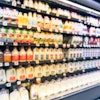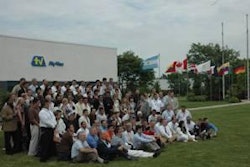The biggest question for me every time is: What am I being asked to talk about? Event organisers seem to have a favourite trick of asking for remarks on something a little away from the standard agenda, so the preparation for the talk takes even longer than usual.
Recent examples have varied from specified pork marketing strategies to the worldwide adoption of animal welfare initiatives and the improvement of labour relations at farm level. You might guess that the discussion areas on the organiser’s wish list make a big difference to whether or not I feel inclined to accept the invitation.
Then, of course, there is the hot topic of the moment — influenza A virus H1N1. I think it is probably for the better that the identity of the individual who first said it should be called swine flu will never be known. Otherwise, there would be a long line of folks from the pork business hoping to have the chance of grabbing this person by the throat.
There can have been few previous instances where serious economic damage has been done to a branch of animal agriculture by a disease agent that did not in fact originate on any farm. We have every reason to be bitter, as we hear the existence of this variant still blamed for the reduced demand for pigmeat in all its forms. We are made to suffer for someone else’s mistake.
What makes me most angry is to see the mis-naming of the virus used by governments as an excuse for halting the importation of pork from certain territories. You cannot tell me that government people lack access to scientific advice that would have assured them there was zero connection between eating any sort of cooked meat and acquiring a respiratory infection. Even if the virus were to be connected to pig production, which it is not, the justification for banning imports would be entirely absent.
Quite rightly, the associations and federations who represent our interests say time and again that every reference to the virus must be as H1N1. The World Health Organisation says much the same. Yet there are still government-level agencies who give their public conferences the wrong label. Even more, I have lost count of the number of airports that display an official poster at the point of arrival, listing precautions against ‘swine flu’.
Presumably these posters are the work of an agency with responsibility for human health and therefore with a good understanding of science. If agencies like that keep putting out the wrong message, no amount of complaint from pig industry representatives is going to change the mindset of the average member of public.
In my next speech to a meeting, however, I propose offering an idea. As far as I know, governments and their offshoots are accepting the term swine flu on the basis that somewhere in the genetics of the virus there is a coding for the agent associated with influenza in pigs. No matter that human, avian or other viral codings are also present and that the infection surfaced first in humans, this apparently was justification enough in some scientist’s mind for seizing on a piggy name.
These same governments and agencies usually are also in charge of regulations on labels for meat products. So if they think it is acceptable to talk of swine flu because of a vague link, I think we should be allowed to put some fishmeal in the feed for our pigs and then start labelling the pork as fish.
Amino acids ban set a formulation dilemma
A debate going on in Europe at present rotates around the supply of feed ingredients for those production schemes that want to claim to be organic or biological. There are fears that the flow of raw materials for organic feeds will slow to a trickle so supplies fail to match demand.
Most voices in the debate refer to the issue of genetically modified organisms or GMOs. They point to the stipulation of the organic certifying bodies that feeds must be GMO-free and question where they are going to find suitable ingredients in enough quantities, given that genetic modification is deeply penetrated already in soybeans and corn and is coming fast for wheat and other food crops.
Less is said currently about the separate matter of feed formulation for the organic schemes. They tend to ban any feeding of so-called artificial materials, as opposed to those deemed natural. This rules out the option for formulators to balance diets by the use of supplementary amino acids.
Unfortunately, this results in practice in a diet formula that probably contains more crude protein than would have been the case if industrially manufactured amino acids were allowed as components. Excessive protein means more nitrogen excreted into the environment, which is hardly the message that the organic lobby wants to convey.
Feeble finances risk a shortage of feed
Consolidation is a fact of life in our business. Farms join together, suppliers merge, some enterprises disappear, others emerge.
The process will not be slowed by the current poor shape of national economies and of financial markets. Quite the opposite may occur, with the landscape of operations more vulnerable than ever to change because of the never-ending quest for the cash that will ensure survival and viability.
All of which raised a question in a discussion group I attended recently. Are pig units prepared for the contingency that their feed supply may be suddenly cut off?
It was aimed at the units that buy their complete feeds, as you would expect. The feed manufacturers have been saying for years that they would like their customers to have more storage space on the farm and therefore less need to place last-minute orders for immediate delivery.
But not much has changed along the way. It is still common that the bins and silos on a unit hold about one week’s feed requirement provided they are filled to the brim. Often, they are allowed to drop to less than half-full before any top-up is ordered.
This routine works as long as the source mill is operating. Our discussion group wondered, however, about the potential impact of a large feed company running out of money and failing to find a fresh line of finance. Mills could be told to stop overnight. There might be enough spare capacity in the area to replace its deliveries if given time, but probably none available to provide the feed in an instant.
So it seems you should be doing one of two things in these recessionary times. Either put in enough feed stores to hold you over for a longer period. Or make absolutely certain that your feed supplier is in good health financially.

















